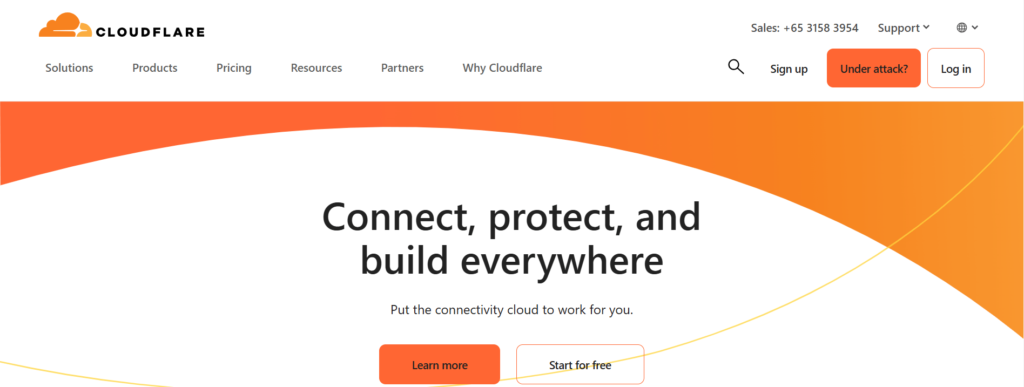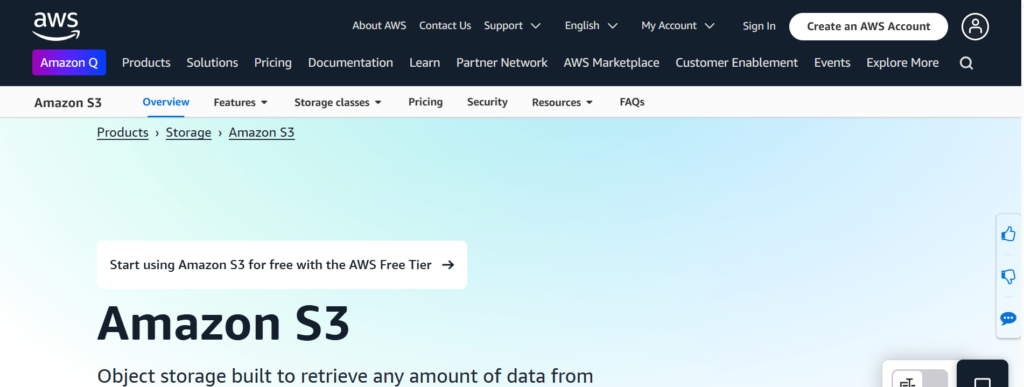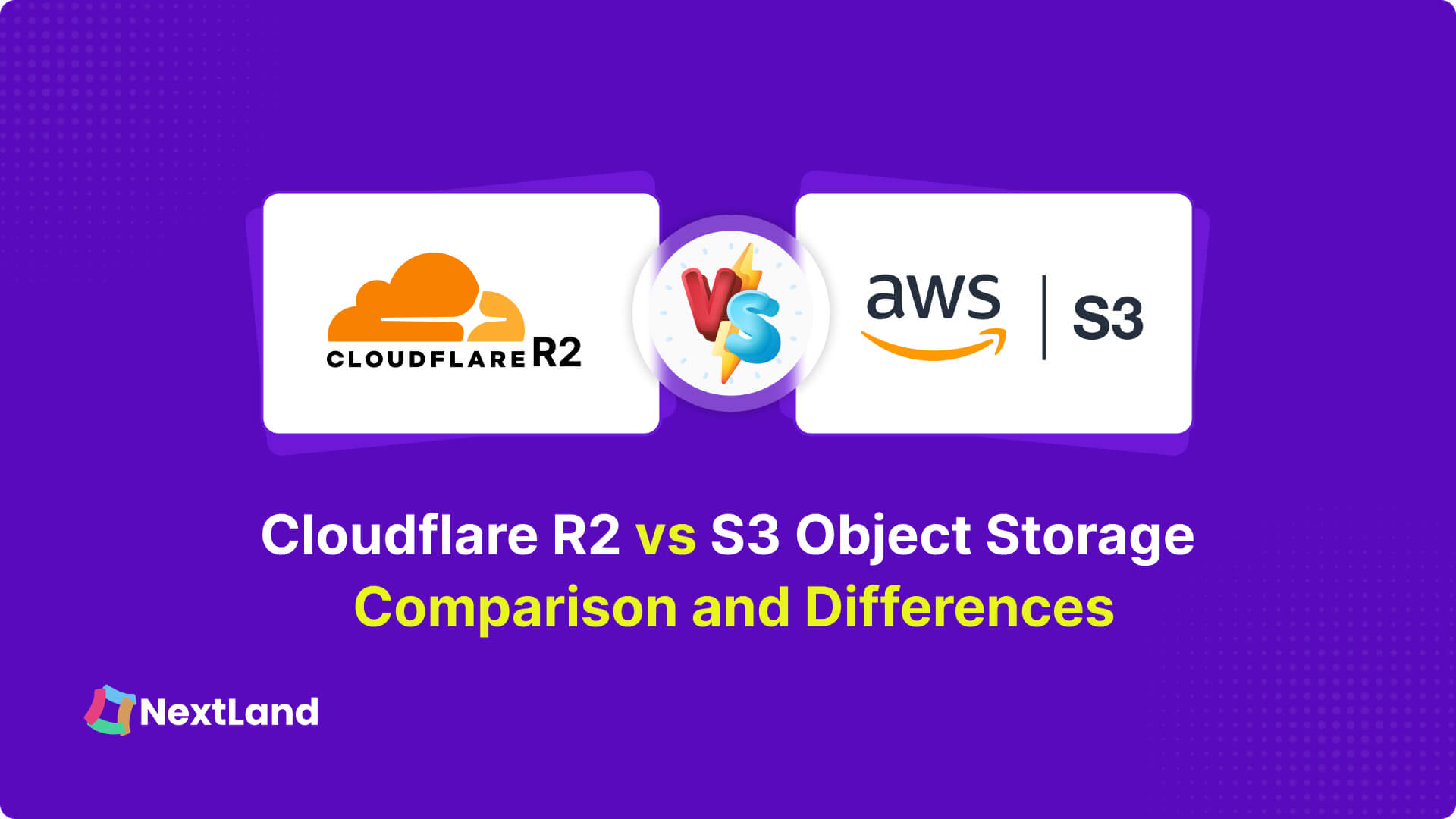Storing data online is now a must for websites and apps. However, choosing the right storage can be tricky. Cloudflare R2 and S3 Object Storage are two popular options.
Cloudflare R2 is great because it has no egress fees, which makes it cheaper for moving data. S3 Object Storage follows the S3 API and is a scalable object storage service provided by Amazon Web Services (AWS). Each has its own pricing and features.
Which one is best for you? This blog will compare Cloudflare R2 vs S3 Object Storage. You’ll learn the key differences in cost and performance and when to use each.
Let’s get started.
Overview of Cloudflare R2

Cloudflare R2 is a scalable object storage service that helps store and manage large amounts of data. It does not charge egress fees, which means you can move data without extra costs. This makes it a budget-friendly choice for developers and businesses.
R2 works well with Cloudflare Workers. It makes processing and delivering data quickly easy. It runs on Cloudflare’s global network, improving speed and reliability. You can use it for tasks like authentication, request routing, and caching.
For websites, Cloudflare R2 can be a smart choice. It helps reduce costs, improves site performance, and integrates with other Cloudflare tools. If you need affordable and fast storage, R2 is a great option.
Key Features and Benefits
- Cloudflare R2 does not charge for data transfer, which helps reduce overall costs.
- Data is stored securely with redundancy, reducing the risk of data loss.
- Storage costs are lower compared to many other cloud storage providers.
- It works well with Cloudflare Workers and other Cloudflare services for better performance.
- It can handle large amounts of data, making it ideal for growing businesses.
- It reduces latency and speeds up content delivery for websites and applications.
- It supports the S3 API. It is easy to integrate with existing tools and applications.
- Cloudflare R2 runs on Cloudflare’s worldwide network, ensuring faster access to stored data.
- Users have the flexibility to move and manage data without restrictions.
Read More: Cloudflare R2 Object Storage: What You Need to Know
Overview of S3 Object Storage

Amazon Simple Storage Service (S3) is a scalable object storage service provided by Amazon Web Services (AWS). It provides scalable and secure storage for any type of data. Users can store and retrieve data from anywhere on the internet.
S3 stores data as objects inside buckets. Each object has data, metadata, and a unique identifier. It offers different storage classes, such as S3 Standard for frequent access and S3 Intelligent-Tiering for cost savings.
Security is a key feature of S3. It includes access controls, encryption, and compliance certifications. S3 also integrates with AWS services for data processing, analytics, and machine learning.
Key Features of Amazon S3
- Amazon S3 can store unlimited amounts of data and automatically scales as storage needs grow.
- Data stored in S3 is accessible anytime, ensuring reliable performance for applications and services.
- It ensures fast data retrieval and supports parallel requests for high-speed performance.
- It offers high durability by storing multiple copies of data across different locations.
- It offers different storage options, including S3 Standard, S3 Intelligent-Tiering, and S3 Glacier, to optimize costs based on data access needs.
- S3 works seamlessly with other AWS services like Lambda, Athena, and Machine Learning for data processing and analytics.
- S3 provides encryption, access controls, and compliance certifications to protect stored data.
- It supports versioning to keep multiple versions of objects and helps in data recovery.
- S3 follows a pay-as-you-go pricing model, allowing users to pay only for the storage they use.
- Users can set lifecycle policies to automatically move or delete objects based on usage patterns.
Read More: How to integrate Amazon S3 with WordPress to offload files
Key Differences Between Cloudflare R2 and S3 Object Storage
Cloudflare R2 and AWS S3 are popular cloud storage solutions with different priorities.
Cloudflare R2 is known for its zero egress fees, S3 API compatibility, and global edge network. It is a cost-effective choice for businesses looking to avoid high data transfer costs.
On the other hand, AWS S3 object storage provides exceptional durability (11 nines or 99.999999999%) and deep integration with AWS services. It is ideal for data lakes, machine learning, and large-scale analytics. However, it comes with egress fees and a stronger dependency on AWS infrastructure.
Below is a detailed comparison of these two storage solutions based on key factors.
API Compatibility
- Cloudflare R2: Supports S3-compatible APIs. It allows developers to integrate existing tools, applications, and workflows with minimal adjustments. This makes migration from AWS S3 relatively smooth.
- Amazon S3: Uses its own S3 APIs, which are widely adopted and supported by various applications. Many third-party tools and platforms are built to work seamlessly with AWS S3.
Cost Structure
- Cloudflare R2: One of the biggest advantages of Cloudflare R2 is its zero egress fees. You can transfer large amounts of data without worrying about additional costs, making it a budget-friendly solution for high-traffic websites and applications.
- Amazon S3: AWS S3 applies egress fees when data is transferred out of its storage, which can significantly increase costs, especially for businesses that frequently move large datasets.
Durability and Availability
- Cloudflare R2: While it provides high availability, it focuses more on cost savings and flexibility than extreme durability guarantees.
- Amazon S3: This delivers 11 nines (99.999999999%) durability, ensuring that stored data remains intact even in the event of hardware failures. This makes it highly reliable for mission-critical storage.
Global Network and Latency
- Cloudflare R2: Leverages Cloudflare’s global edge network, which spans over 330+ data centers worldwide. This ensures lower latency and faster access to data, particularly for content delivery and web applications.
- Amazon S3: Operates through multiple AWS regions and availability zones. While AWS provides global availability, it primarily follows a centralized cloud model rather than an edge-based approach.
Use Cases
- Cloudflare R2: Best suited for businesses that require multi-cloud compatibility, content delivery optimization, and minimal vendor lock-in. It is a great choice for reducing data transfer costs while maintaining performance.
- Amazon S3: Ideal for data lakes, machine learning, cloud-native applications, big data analytics, and long-term data storage. Its deep AWS integration makes it a strong choice for businesses already using other AWS services.
Event-Driven Applications
- Cloudflare R2: Supports event notifications and queues, allowing businesses to automate processes based on changes in stored data. This is useful for applications that rely on real-time updates.
- Amazon S3: This offers robust event-driven workflows with deep AWS service integration. It can trigger AWS Lambda functions, Step Functions, or other AWS services when data is modified.
Vendor Lock-In
- Cloudflare R2: Helps to reduce vendor lock-in, making it easier for businesses to adopt a multi-cloud strategy and migrate data between different providers.
- Amazon S3: Strongly tied to AWS infrastructure. It offers seamless integration with other AWS services. However, moving data out of AWS can be costly due to egress fees and data transfer restrictions.
When to Choose Cloudflare R2 Over S3 Object Storage?
Cloudflare R2 is a good option if you want to avoid egress fees. Unlike some S3-compatible providers, R2 doesn’t charge for data transfers. This can save you money if your app needs to move data often. If you already use Cloudflare’s CDN, security, or other services, R2 integrates easily with them.
Cloudflare R2 also has a simple pricing model. There are no hidden costs, like fees for API requests or data retrieval, which is common with some S3-compatible providers. If you use serverless or edge computing, R2 works well with Cloudflare Workers. This makes it a great choice for applications that need fast, on-the-fly data processing.
Choose Cloudflare R2 If:
- You want to avoid egress fees for data transfers.
- You need fast, global access for users in different regions.
- You already use Cloudflare’s services like CDN, security, or edge computing.
- You prefer a straightforward pricing model with no hidden costs.
- You run serverless or edge applications that work well with Cloudflare Workers.
When to Choose S3 Object Storage Over Cloudflare R2
S3 Object Storage (Amazon S3) is a better choice if you need full S3 API compatibility. Many cloud applications, backup tools, and data management systems are built to work with Amazon S3. It ensures smooth integration with existing workflows and provides a trusted solution for businesses that rely on the S3 standard.
It is also a good option if you prefer flexibility across multiple cloud services. Cloudflare R2 works best within Cloudflare’s ecosystem, while Amazon S3 allows you to integrate with various AWS services and third-party tools.
Some businesses may also find Amazon S3’s pricing models more suitable. While Cloudflare R2 has a simple structure, Amazon S3 offers various pricing tiers, including reduced costs for long-term storage and different retrieval options.
Choose S3 Object Storage (Amazon S3) If:
- You need full S3 API compatibility for your applications.
- You want flexibility to integrate with AWS and other cloud services.
- You require data centers in specific regions for compliance.
- You prefer different pricing models, such as long-term storage discounts.
Bonus: How Do You Offload WordPress Media Files to Cloudflare R2 and S3 Object Storage?
Offloading WordPress media files to cloud storage like Cloudflare R2 and S3 Object Storage helps enhance website performance by reducing server load and speeding up content delivery. The Next3 Offload plugin is a perfect solution for automating this process and integrates seamlessly with these cloud storage services.
Next3 Offload simplifies media file management and improves website speed. It automatically uploads and serves images, videos, and other media files from Cloudflare R2 or S3-compatible storage.
Next3 Offload is a powerful solution for WordPress users who want to optimize media storage. Whether you choose Cloudflare R2 or S3 Object Storage, this plugin makes the process simple and efficient.
Amazing Features of Next3 Offload
- Automatic Media Offloading – Next3 Offload automatically transfers new media files to cloud storage, saving local server space.
- Faster Page Load Speed – Serving media from a cloud storage network reduces website load time and improves user experience.
- Seamless Integration – It works smoothly with Cloudflare R2, Amazon S3, Wasabi, and other S3-compatible storage providers.
- Bulk Media Migration – Easily move existing media files to cloud storage with a single click, without affecting your website.
- WebP Image Conversion – Convert JPEG images to WebP format automatically, reducing file size and improving performance.
- Image and Database Optimization: The plugin supports image and database optimization
- Easy Media Management – It provides an easy-to-use interface within WordPress, making it simple to manage media files in the cloud.
Quick Comparison Table: Compare Cloudflare R2 and AWS S3 Side by Side
| Feature | Cloudflare R2 | AWS S3 |
| Egress Fees | No egress fees | Charging egress fees |
| Compatibility | S3-compatible APIs | Native S3 APIs |
| Durability | High availability, but specific durability not emphasized | 99.999999999% (11 9’s) durability |
| Global Network | Integrated with Cloudflare’s global edge network (330+ data centers) | Operates in multiple regions with centralized storage |
| Cost Structure | Cost-effective with consistent pricing | Charges for data transfer and additional features |
| Event-Driven Applications | Supports event notifications and workflows | Event notifications integrated with AWS services |
| Vendor Lock-In | Avoids vendor lock-in, flexible for multi-cloud setups | Potential for vendor lock-in due to AWS ecosystem integration |
| Best For | Multi-cloud architectures, cost savings, content delivery | Data lakes, machine learning, big data analytics |
Final thoughts on Cloudflare R2 vs. S3 Object Storage
Choosing between Cloudflare R2 and S3 Object Storage depends on your needs. It works well if you already use Cloudflare’s CDN and security services. R2 has a simple pricing model and works well with serverless applications using Cloudflare Workers.
S3 Object Storage is a good option if you need compatibility with the S3 API. It is a reliable choice for businesses that need advanced storage features and integrations.
Both Cloudflare R2 and S3 Object Storage offer great benefits. R2 is perfect for reducing costs and improving performance, while S3 Object Storage is ideal for compatibility and flexibility.






